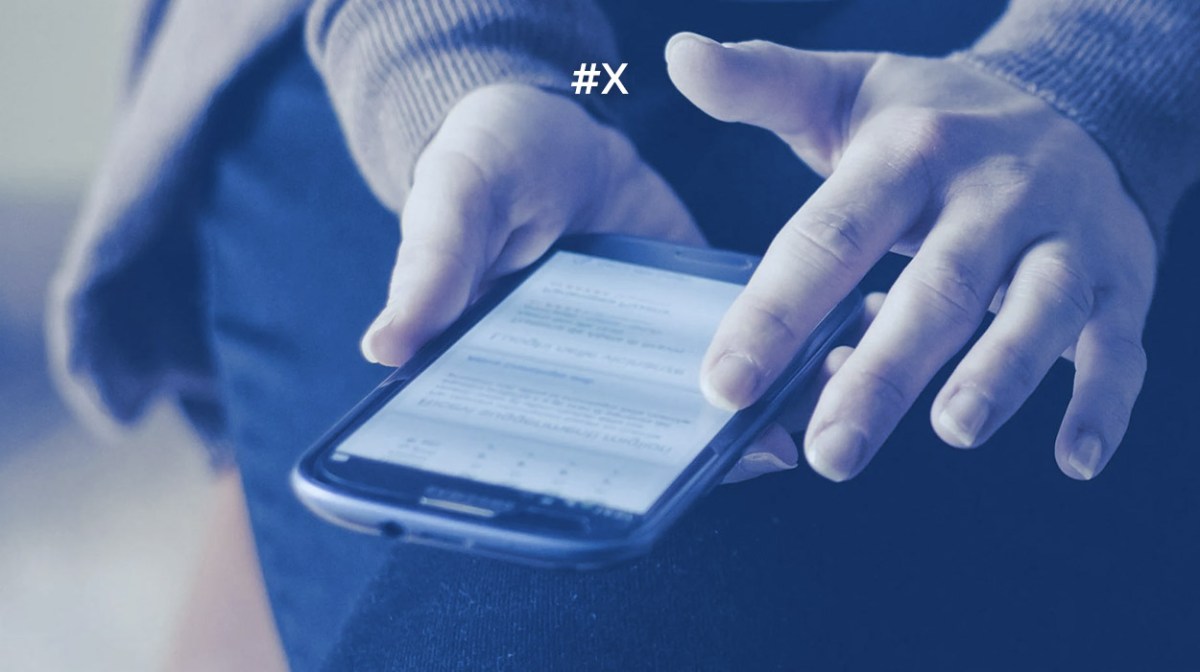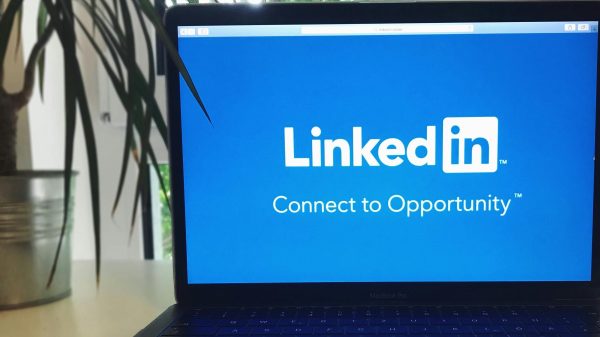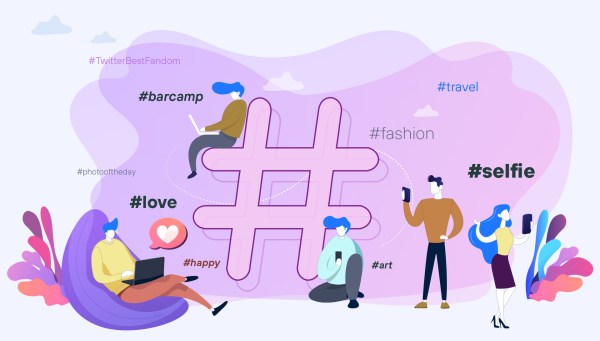If social media is key to understanding the current state of global communication, we can say that social network X, initially a microblogging platform, has become a phenomenon in its own right since 21 March 2006, when its co-founder Jack Dorsey posted: ‘Just setting up my twttr’.
Understanding and studying it allows us to draw parallels with the evolution of communication over the last 20 years. Let’s see if we can do that in this article.
And X in particular? How has communication on X evolved over the years?
X has contributed essential elements and dynamics to global communication since its inception. Until 2007, we could say that X did not take off globally. In 2007, Chris Messina introduced the use of the hashtag (#) to group conversations. Who doesn’t tag anything on social media or in online publications nowadays? Apparently, only papers (abstracts) and the print media have been spared from this original contribution from X. Tag me, please…!
In 2009, Trending Topics were launched. This was another way of tagging and classifying the most relevant and popular information for the network and its community of followers. Understanding what tagging represents in the public sphere is essential to understanding subsequent phenomena associated with the veracity and dissemination of information. By the way, it would be great if this article were a Trending Topic in my company.
But that’s not all. The concept of ‘real-time information’ also appeared and became established through Twitter. Not so long ago, the role of Twitter as a means of disseminating information during the protests in Iran in 2010-2013 confirmed that a door had been opened that could no longer be closed.
Real-time journalism is no longer the preserve of the teletype. Anyone with a mobile phone or similar device at the scene of the news becomes an ‘exceptional journalist’. There are no distances, no languages, the language of communication is unified. It should be remembered that the maximum 140 characters per post at the time made the X network immediate and ideal for the exchange of information and public conversation.
Newspapers and magazines were already ‘tearing their hair out’ over this. Now you can comment on New Year’s Eve chimes, the latest Spanish football match, the NBA finals, any live event… with the whole community or with your interest group on any social network. At that time, only X clearly fulfilled this condition.
I am going into detail in this answer because there is still more to tell. Do you know what a retweet is? November 19, 2009. I find the photo of a BIC pen and a cassette tape funny. Even more so when you are asked what you can do with both at the same time. But little is said now about ‘RT @user’. The older ones among us will understand.
Over time, retweeting has become a validating element, both relevant and amplifying communication from that date onwards. For better or for worse. In fact, some consider retweeting certain types of content to be legally responsible. Tell that to prominent figures in our society who deleted much of the content from their accounts to avoid comments about their retweets or comments in the past. These are things that happen in the public arena.
The emergence of image- and video-based networks such as Snapchat, Instagram and TikTok, and X’s response to avoid losing market share and potential customers for its business model, mark the evolution of communication on X since the mid-2010s. But I’ll leave that for the next question.
How has it changed since it went from being Twitter to being X?
On 27 October 2022, after a period of negotiations, Elon Musk bought Twitter for $44 billion.
Musk, inspired by the Chinese app WeChat, continues to transform X into a comprehensive platform that combines:
- Messaging.
- Live audio and video (Spaces). A response to Instagram/TikTok Live, allowing live audio.
- Information verification. Community Notes. A community tool to combat misinformation, differentiating itself in terms of transparency, according to its administrators.
- Digital payments and e-commerce. X Money Account is the name of the digital payment system that Musk wants to integrate into the social network. With a digital wallet integrated into the platform that allows users to make payments, transfer funds to external bank accounts, connect debit cards and even work with cryptocurrencies. To this end, on 28 January 2025, Linda Yaccarino, CEO of X Corp, announced an agreement with Visa in this regard through the Visa Direct solution, which enables real-time transfers.
- Financial services. In terms of financial services, X Payments LLC has already obtained authorisation to provide these services in 41 states, which will be extended to the entire United States at the end of the beta phase. Thanks to data analysis and the use of artificial intelligence, users will receive personalised offers tailored to their consumption habits and financial needs.
- Premium subscriptions. Introduction of direct payments, tips, and paid subscriptions (X Premium). Makes it easier for creators to charge for exclusive content, similar to Patreon or Instagram subscriptions.
- Artificial Intelligence. Grok. This is a chatbot based on state-of-the-art language models (LLM). Initially launched for premium subscribers in 2023 and now available in version 3, Grok-3 is also available for premium subscribers, and in version 2, Grok-2 is available for all users. It answers questions, solves problems, generates and improves text, creates images, and helps users complete tasks. It stands out for its real-time access to all social media content and up-to-date information on the internet, which allows it to initially offer answers based on the latest trends and data integrated into the platform.
These changes, combined with what they say is a broader freedom of expression policy, have generated and will continue to generate enormous controversy among all its users. A large number of them commented that they had ‘never seen such chaos’ and publicly announced their departure to other social platforms such as Mastodon, Threads (Instagram), Bluesky, Spill, Pebble and Nostr.
However, the number of users has continued to grow, although not at the same rate as before the Musk era. We are currently talking about nearly 400 million people participating in it. It is also true that the large number of social networks and content platforms means that growth rates are moderating compared to ‘other times’.
What type of communications generate the most views? And which ones generate the most engagement?
In today’s social media landscape, understanding what types of content maximise both views and engagement on X (formerly Twitter) is critical to any successful digital communication strategy.
Consumption patterns on X have undergone significant transformations in 2025, influenced by algorithmic updates, user preferences and the integration of new features. There is an important distinction between content that generates greater visibility versus content that drives greater user engagement. Let’s explore this further.
Audiovisual content: The dominance of multimedia formats
- High-quality, extended-length videos. In 2025, high-definition (1080p) videos lasting up to 120 minutes have gained prominence. This evolution responds to demand for educational content, in-depth interviews and thematic analysis. For example, live broadcasts of sporting events and technical tutorials have recorded high average viewership in their first 24 hours.
- Short videos (less than 2 minutes) remain effective at capturing attention quickly, with an ‘18% increase in completion rates’ compared to 2024. However, the algorithm prioritises those that combine informative value and professional production, penalising generic or recycled content. You know, be yourself. That applies to any social network to stand out.
- Strategic images and GIFs. Posts with custom images or GIFs get 35% more retweets than text-only posts. Their success lies in their ability to synthesise complex ideas and generate immediate emotional reactions.
Narrative threads: The reconquest of text
- Structure and thematic depth Well-structured threads, with ‘catchy titles and progressive development of ideas,’ continue to be a key tool for engagement. In April 2025, 40% of viral tweets were threads addressing topics such as artificial intelligence or economic policy. One example is the analysis of the trade war between the US and the EU, which generated 12,000 responses and 45,000 likes.
- Initial Hook Techniques. The first tweet in a thread should include ‘keywords in capital letters, relevant emojis and a call to action’ (e.g., ‘Did you know…? Read on’). This strategy increases the ‘likelihood of users interacting with the rest of the content by 27%.’
Interactivity and community engagement
- X Spaces: Real-time conversations. Audio rooms on X Spaces have cemented their position as star formats, especially in niches such as technology and pop culture. In May 2025, debates on cryptocurrency regulation attracted 200,000 simultaneous listeners. Their success is due to the possibility of direct interaction with experts and the creation of themed communities.
- Polls and open-ended questions. Twenty-four-hour polls register an average engagement rate of 15%. Their effectiveness increases when linked to controversial or current topics, such as political elections or product launches.
Algorithmic optimisation: key factors in 2025
The X algorithm in 2025 particularly values:
- Video completion rate (minimum 60% for recommendation in ‘For you’).
- Diversity of interactions (combination of likes, replies and retweets).
- Presence of strategic hashtags (2-3 per tweet, preferably thematic such as #TechTrends2025).
Relevant penalties:
- Excessive automation: Accounts that use bots to follow/unfollow lose 42% of their organic reach.
- Untargeted promotional content: Tweets with commercial language and no added value receive 55% fewer impressions.
Emerging trends and projections
- Integration of AI in content creation. Tools such as ChatGPT or GroK itself to generate automatic threads or summaries are being adopted by ‘38% of verified accounts’, reducing production times by 70%. However, users prefer content with ‘a human touch’, evidenced by ‘20% more engagement’ in manually edited tweets compared to automated ones.
- Monetisation through Super Follows. 25% of creators with more than 10,000 followers use Super Follows to offer exclusive content. The most profitable topics include financial education and professional development tutorials.









